 1) Before the rear brakes get installed, the fulcrum brackets need to be installed on the differential. They are installed with two bolts and are wired into place to prevent the bolts from loosening up.
1) Before the rear brakes get installed, the fulcrum brackets need to be installed on the differential. They are installed with two bolts and are wired into place to prevent the bolts from loosening up.
|
 2) The rotors must be mounted firmly in place. It should be assumed that the left and right rotors are not 100% identical in dimension, so it's a good idea to label them. This is important since the caliper brackets need to be shimmed.
2) The rotors must be mounted firmly in place. It should be assumed that the left and right rotors are not 100% identical in dimension, so it's a good idea to label them. This is important since the caliper brackets need to be shimmed.
|
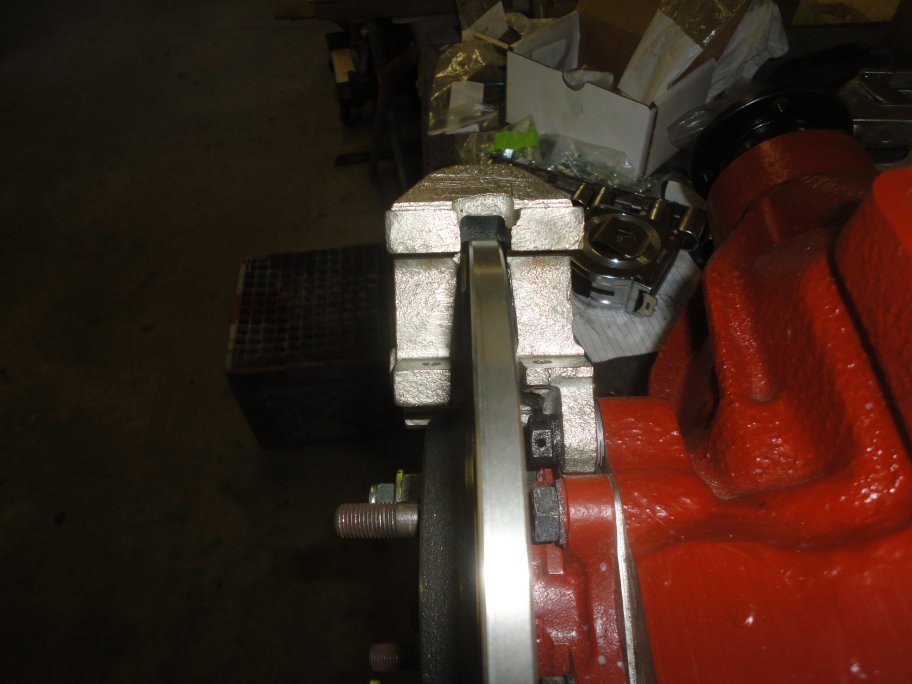 3) The brake caliper brackets need to be mounted and shimmed so that the calipers are equally spaced from the rotor to achieve uniform brake pad wear and braking.
3) The brake caliper brackets need to be mounted and shimmed so that the calipers are equally spaced from the rotor to achieve uniform brake pad wear and braking.
|
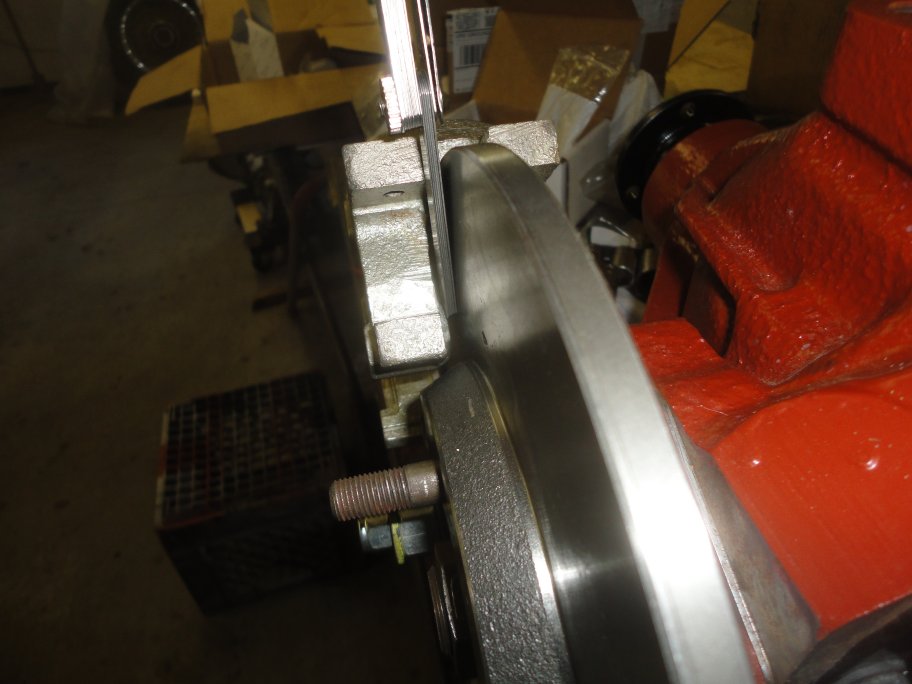 4) Feeler gauges are used to measure the distance between the inner bosses of the caliper bracket and the rotor face.
4) Feeler gauges are used to measure the distance between the inner bosses of the caliper bracket and the rotor face.
|
 5) Shims are added between the caliper bracket and the output shaft bracket to achieve equal spacing. It should be noted that on earlier cars the output shaft shims extended to the caliper brackets to shim them as well. So you only needed a few small shims to center the caliper bracket. Unfortunately the original style shims are not available, so you have to use a lot of smaller shims.
5) Shims are added between the caliper bracket and the output shaft bracket to achieve equal spacing. It should be noted that on earlier cars the output shaft shims extended to the caliper brackets to shim them as well. So you only needed a few small shims to center the caliper bracket. Unfortunately the original style shims are not available, so you have to use a lot of smaller shims.
|
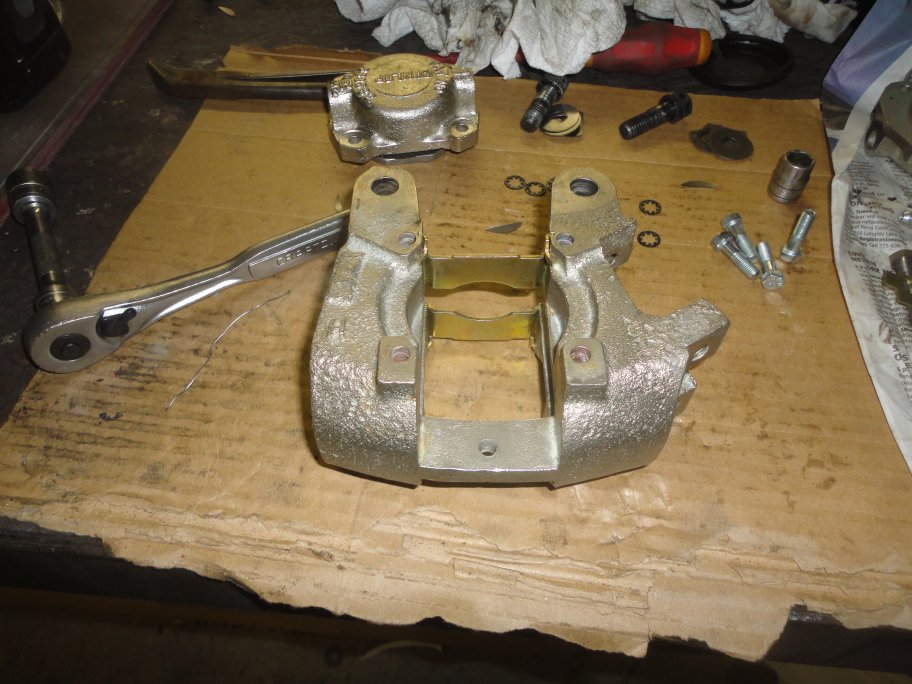 6) Once the shims have been determined the caliper brackets can come back off for the installation of the calipers. Here the brake pad stops have been installed.
6) Once the shims have been determined the caliper brackets can come back off for the installation of the calipers. Here the brake pad stops have been installed.
|
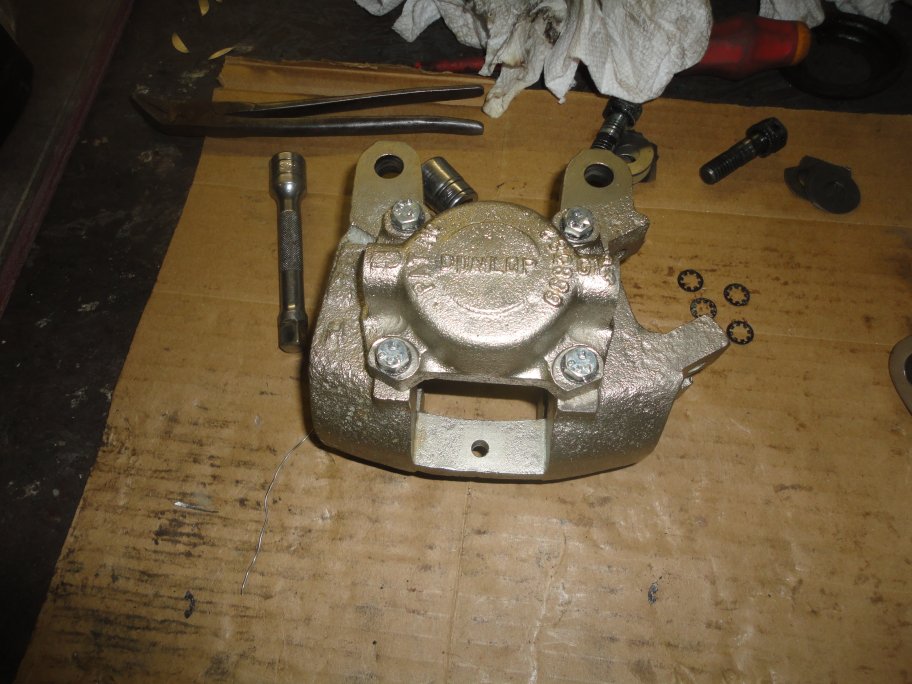 7) Originally 1-3/4" diameter pistons were used in the rear. Many restorers prefer to install the 2-1/8" front calipers in the rear for better braking. For this project I stuck with the originals.
7) Originally 1-3/4" diameter pistons were used in the rear. Many restorers prefer to install the 2-1/8" front calipers in the rear for better braking. For this project I stuck with the originals.
|
|
|
|
 8) With the calipers installed, the caliper bracket bolts need to be wired in place to keep them from loosening up. One bolt must be accessed through a hole in the rotor. This is a very awkward operation.
8) With the calipers installed, the caliper bracket bolts need to be wired in place to keep them from loosening up. One bolt must be accessed through a hole in the rotor. This is a very awkward operation.
|
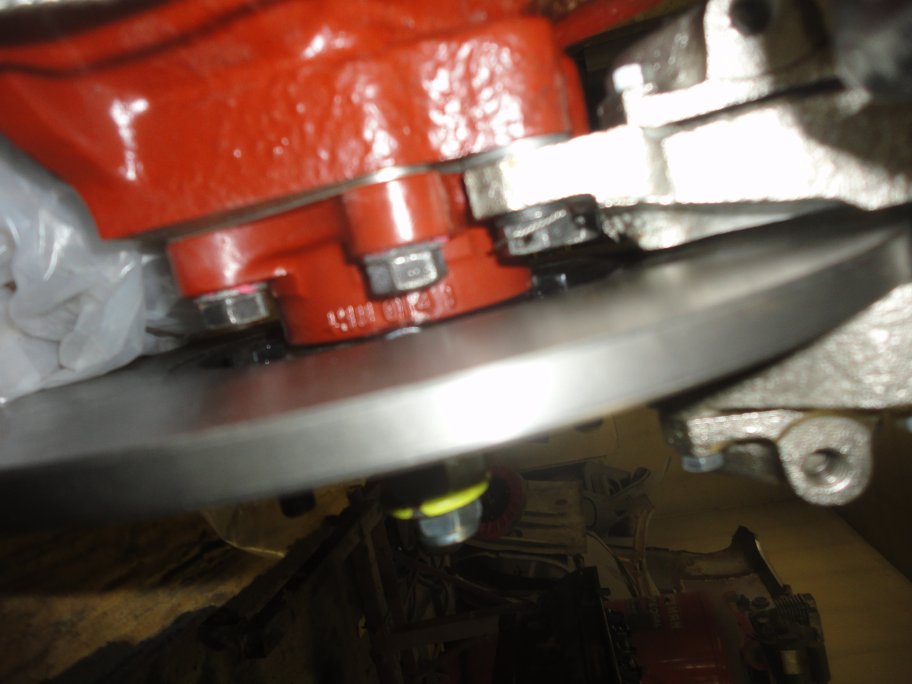 9) The second bolt can be reached from the top.
9) The second bolt can be reached from the top.
|
 10) With that done, the brake pads are simply installed by dropping them in place. Original style pads would hook around the T-bolts on the caliper piston. They are more of a nuisance when try to remove old pads, since the pads tend to get hung up on the bolts.
10) With that done, the brake pads are simply installed by dropping them in place. Original style pads would hook around the T-bolts on the caliper piston. They are more of a nuisance when try to remove old pads, since the pads tend to get hung up on the bolts.
|
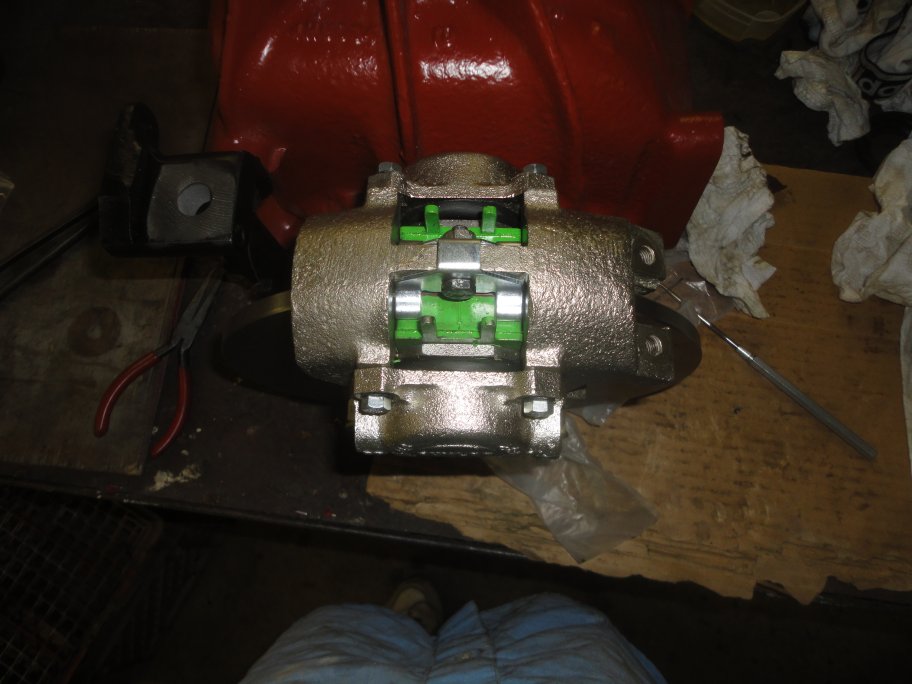 11) The pads are retained with a clip that is bolted in place. For pads, I chose the more expense Green Stuff pads for better braking.
11) The pads are retained with a clip that is bolted in place. For pads, I chose the more expense Green Stuff pads for better braking.
|
 12) The parking brake assemblies go in last. It is a good idea to use new pivot bolts and give them a good coating of anti-seize grease. The ratcheting mechanism inside the housing should be cleaned and well lubricated prior to installation as well.
12) The parking brake assemblies go in last. It is a good idea to use new pivot bolts and give them a good coating of anti-seize grease. The ratcheting mechanism inside the housing should be cleaned and well lubricated prior to installation as well.
|
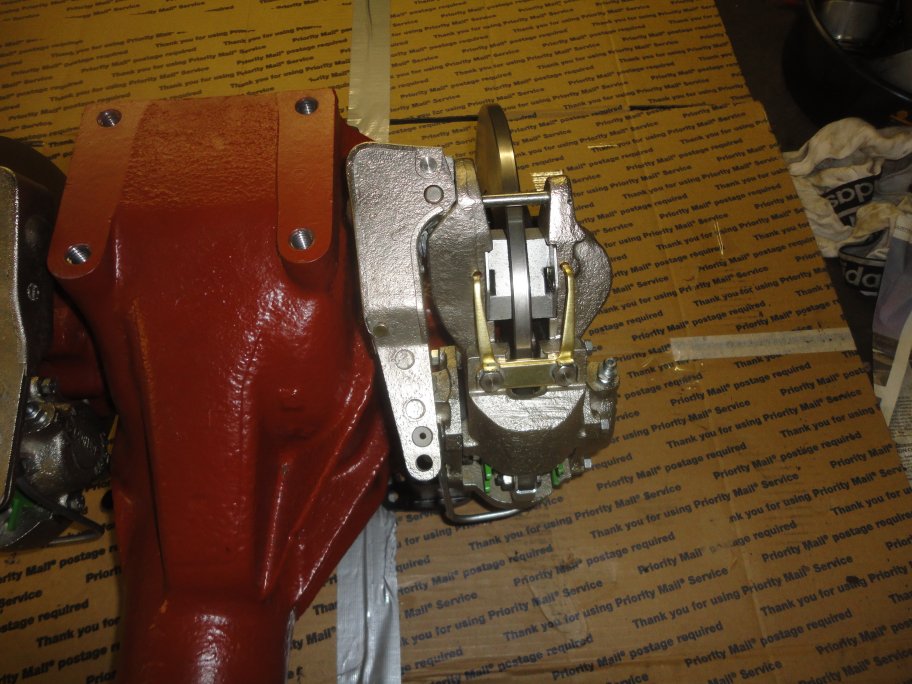 13) Installation is simple with only two bolts. Once the bolts are tighten, the locking tabs are bent to keep them from backing out. Then all that is left to do is adjust the parking brakes. This is simply accomplished by ratcheting the lever in and out until it stops clicking.
13) Installation is simple with only two bolts. Once the bolts are tighten, the locking tabs are bent to keep them from backing out. Then all that is left to do is adjust the parking brakes. This is simply accomplished by ratcheting the lever in and out until it stops clicking.
|
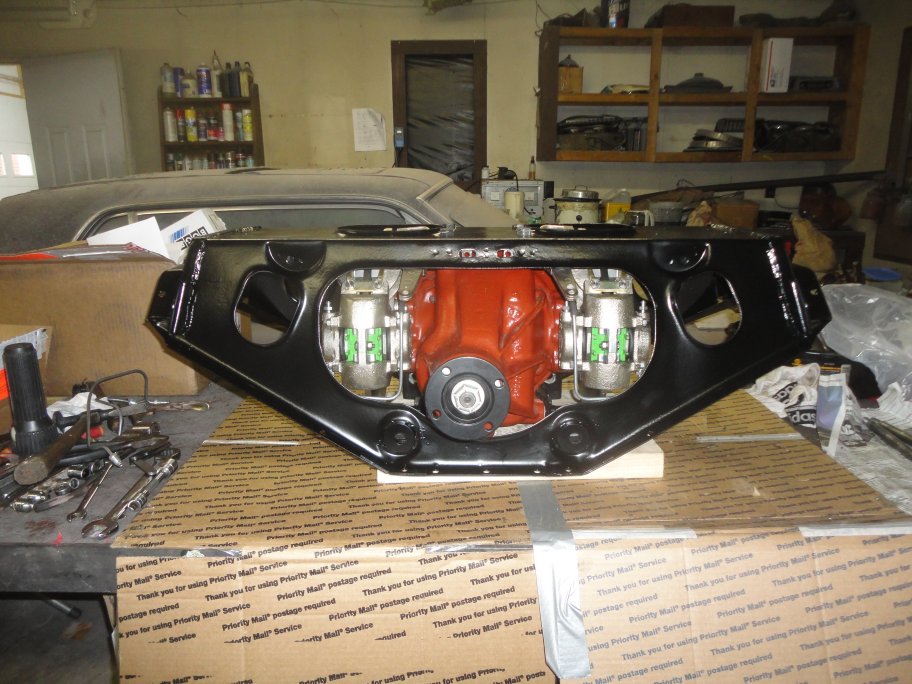 14) The differential assembly must be installed in the IRS cage to finish the assembly of the parking brake mechanism. However, it's easier to leave the levers off until the rest of the IRS is assembled.
14) The differential assembly must be installed in the IRS cage to finish the assembly of the parking brake mechanism. However, it's easier to leave the levers off until the rest of the IRS is assembled.
|
|